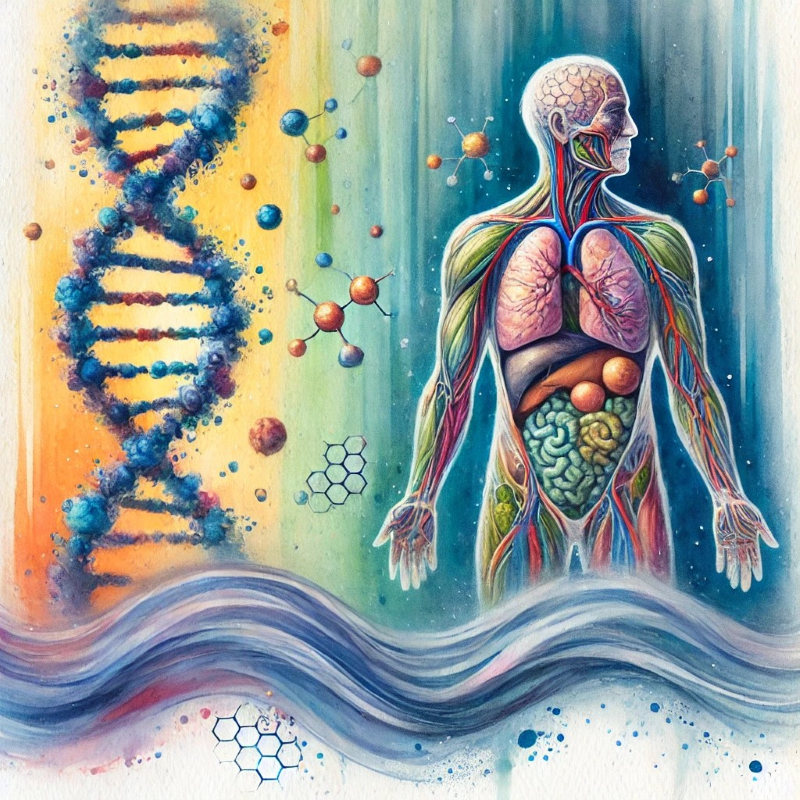Title: The Two Bursts of Aging

Aging is a journey we all embark upon, but it’s not a simple, steady path. Recent groundbreaking research reveals that our bodies age at an accelerated pace during two key life stages: around the ages of 44 and 60. This finding, published in Nature Aging, sheds light on the intricate, nonlinear nature of aging, offering new insights into how we can manage our health as we grow older.
The Complexity of Aging
Aging is a complex and multifactorial process, intricately linked with nearly all human diseases, including cardiovascular diseases, diabetes, neurodegenerative conditions like Parkinson’s, and even cancer. Understanding the molecular changes that occur during aging is crucial for identifying therapeutic targets and potentially increasing the human healthspan.
While many studies have focused on linear changes in aging, where health deteriorates gradually over time, this new research highlights that aging-related diseases and mortality risks accelerate after specific time points in life. These nonlinear changes suggest that the aging process is more of a series of waves rather than a continuous decline.
The Study: Tracking Aging at the Molecular Level
The study conducted by scientists from Stanford University and Nanyang Technological University in Singapore involved comprehensive multi-omics profiling of 108 participants aged between 25 and 75 years. The participants, all residents of California, were observed over a median period of 1.7 years, with some tracked for up to 6.8 years. The researchers collected and analyzed a wide array of biological samples, including blood, stool, skin swabs, and nasal and oral swabs, to monitor changes in molecular markers such as RNA, proteins, and microbiome components.
The analysis revealed consistent nonlinear patterns in these molecular markers, with significant dysregulation occurring at two major periods: around 44 years and 60 years of chronological age. These findings challenge the conventional understanding of aging as a gradual process and instead suggest that our bodies undergo significant shifts at specific ages.
Key Findings: The Two Bursts of Aging
First Burst: Around Age 44
The first major wave of aging occurs around the age of 44. During this period, the study identified changes in several key biological pathways, including those involved in cardiovascular health and lipid and alcohol metabolism. For example, the ability to metabolize alcohol begins to decline significantly, which could explain why many people start to notice changes in how their bodies respond to alcohol as they approach their mid-40s.
This period also marks the beginning of noticeable changes in muscle and skin integrity, which are associated with the dysregulation of proteins that hold tissues together. These changes might contribute to the onset of conditions like sarcopenia (muscle loss), which becomes more pronounced later in life.
Second Burst: Around Age 60
The second significant burst of aging occurs around the age of 60. This period is characterized by more profound changes in immune regulation and carbohydrate metabolism. The study found that individuals at this age experience a marked decrease in their ability to metabolize caffeine and carbohydrates, as well as a heightened risk for cardiovascular diseases, kidney issues, and type 2 diabetes.
Interestingly, these aging patterns were observed in both men and women, suggesting a universal process that affects all individuals regardless of gender. The researchers also noted that these nonlinear changes in aging align with increased susceptibility to age-related diseases, emphasizing the importance of monitoring and managing health as people approach and surpass their 60s.
Implications for Health and Disease Management
The identification of these two bursts of aging has significant implications for healthcare and disease management. By understanding that aging doesn’t happen in a steady decline but rather in waves, healthcare providers can better predict and manage the onset of aging-related diseases. For example, individuals approaching their 60s might benefit from more proactive management of their carbohydrate intake, kidney function, and overall cardiovascular health.
Furthermore, the study identified “clinically actionable markers” that could be used to improve healthcare management and the well-being of aging populations. These markers offer a valuable tool for early diagnosis and prevention of diseases that become more prevalent with age.
The Importance of Lifestyle Changes
Given the study’s findings, the researchers advise individuals, especially those nearing their 40s and 60s, to consider making lifestyle changes to mitigate the effects of these aging bursts. Reducing alcohol consumption, increasing physical activity, and monitoring diet—particularly carbohydrate intake—are recommended strategies to maintain health and delay the onset of aging-related conditions.
Xiaotao Shen, an assistant professor at Nanyang Technological University and the lead author of the study, emphasized the need for individuals to take care of themselves more closely at specific points in their lives. “We are not becoming old gradually,” Shen noted, highlighting the importance of these critical periods for aging and health.
Conclusion
This research provides compelling evidence that aging is not a linear process but occurs in significant bursts, particularly around the ages of 44 and 60. These findings offer new insights into the molecular dynamics of aging and underscore the importance of targeted healthcare interventions at specific life stages. As we continue to explore the complex process of aging, these discoveries could lead to more effective strategies for extending healthspan and improving the quality of life as we age.
AI-generated medical content is not a substitute for professional medical advice or diagnosis; I hope you found this blog post informative and interesting. www.parkiesunite.com by Parkie
SEO Keywords: aging bursts, nonlinear aging, aging waves, molecular aging changes, aging-related diseases
DALL-E Prompt: A watercolor painting of a human body aging in two distinct waves, one around the age of 44 and another at 60. The painting should show the body with elements symbolizing molecular changes—like fading DNA strands and shifting colors in the body’s organs. The background should be a blend of cool and warm colors, reflecting the transitions in health and vitality.
The watercolor painting you requested has been created, depicting the human body aging in two distinct waves, with symbolic elements of molecular changes and a background of blended cool and warm colors.